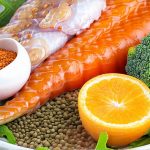The intricate relationship between what we eat, how our bodies process it, and its eventual impact on seemingly distant organs like the bladder is often overlooked. Most people associate dietary changes with weight management or digestive health, but food choices can significantly influence bladder function and comfort. This connection isn’t always straightforward; it’s a complex interplay of biochemical processes, individual sensitivities, and pre-existing conditions. Understanding this link allows for proactive strategies to mitigate potential issues and foster overall well-being.
This article delves into the nuanced world of food temperature considerations as they relate to bladder health. It’s not about eliminating entire food groups or adhering to a strict diet; rather, it’s about gaining awareness of how temperature – both in preparation and consumption – can affect bladder sensitivity and potentially contribute to symptoms like urgency, frequency, discomfort, or even exacerbate conditions such as interstitial cystitis (IC). We will explore the science behind these effects, providing practical insights for making informed choices that support a comfortable and healthy urinary system.
The Science of Temperature & Bladder Sensitivity
The bladder is lined with a urothelium, a specialized layer of cells designed to stretch and contract while maintaining a protective barrier against urine’s potentially irritating components. This lining is highly sensitive to temperature fluctuations. When exposed to extreme temperatures – either hot or cold – the nerves in the bladder wall can become irritated, triggering a cascade of events that lead to increased frequency, urgency, and discomfort. Think of it like pouring very hot coffee on your skin; the immediate reaction is one of intense sensation. The bladder responds similarly, though often more subtly.
The physiological mechanism behind this sensitivity involves transient receptor potential (TRP) channels in urothelial cells. These channels act as sensors for temperature changes, activating when exposed to extreme heat or cold. Activation then signals nerves, ultimately leading to increased bladder contractions and the sensation of needing to urinate. Furthermore, certain foods can exacerbate these effects; highly spiced foods, for example, contain compounds that also activate TRP channels, adding to the potential for irritation. It’s important to note individual tolerances vary widely – what triggers a reaction in one person may not affect another.
However, even seemingly minor temperature variations can accumulate over time and contribute to chronic bladder symptoms. Repeated exposure to irritating temperatures weakens the protective barrier of the urothelium, making it more susceptible to inflammation and discomfort. This is especially relevant for individuals with pre-existing conditions like IC, where the bladder lining is already compromised. Understanding best dietary practices can assist in managing these sensitivities.
Food Preparation Methods & Bladder Irritation
The way food is prepared plays a crucial role in its potential impact on bladder health. While raw foods generally pose less of a temperature concern, cooking methods can significantly alter the thermal properties and irritation potential of different dishes. Deep-fried foods, for example, often contain high levels of oil and spices, both of which can irritate the bladder. However, even seemingly benign cooking methods like steaming or baking can contribute to issues if temperatures are too high.
Consider soup: a comforting dish that can be problematic for some with sensitive bladders. A piping hot bowl of soup delivers a direct thermal shock to the bladder upon consumption. Similarly, freshly baked bread, while enjoyable, may contain ingredients (like gluten in certain cases) and heat levels that contribute to discomfort. Conversely, foods served at room temperature or slightly warmed are generally less likely to trigger symptoms.
Beyond the immediate temperature, it’s also important to consider how food is heated. Microwaving can create uneven heating, resulting in pockets of extreme temperatures within a dish. This makes it harder to predict and manage potential bladder irritation. Opting for more controlled heating methods – such as gently warming foods on the stovetop or using an oven at a moderate temperature – can help minimize these risks. Low-stress cooking techniques can reduce overall irritation.
Identifying Trigger Foods & Temperatures
Pinpointing specific trigger foods and temperatures is essential for managing bladder discomfort. A detailed food diary, meticulously tracking both what you eat and how it’s prepared (including serving temperature), is a valuable starting point. Be sure to note any associated symptoms – urgency, frequency, pain, or burning – along with the time of consumption. This allows you to identify patterns and potential connections between dietary choices and bladder responses.
- Elimination Diet: Consider a temporary elimination diet, removing suspected trigger foods for several weeks and then gradually reintroducing them one at a time. Pay close attention to how your bladder reacts as you reintroduce each food.
- Temperature Testing: Experiment with different serving temperatures of the same food. For example, try drinking herbal tea lukewarm instead of hot and observe any difference in symptoms.
- Professional Guidance: Consulting with a registered dietitian or healthcare professional specializing in bladder health can provide personalized guidance and support in identifying triggers and developing a tailored dietary plan.
Hydration & Temperature Regulation
Adequate hydration is vital for overall bladder health, but the temperature of your fluids matters too. While cold water may seem refreshing, it can sometimes exacerbate bladder sensitivity by causing rapid contractions. Room-temperature or slightly warm water is often better tolerated, as it’s less likely to shock the bladder lining. The same principle applies to other beverages – avoid icy drinks and opt for room-temperature alternatives whenever possible.
Staying well-hydrated helps dilute urine, reducing its concentration of irritating substances. However, overhydration can also lead to frequent urination, so finding a balance is key. Listen to your body’s signals and adjust fluid intake accordingly. A general guideline is to aim for 6-8 glasses of water per day, but individual needs may vary depending on activity level, climate, and underlying health conditions. Considering smart food combinations alongside hydration can be beneficial.
Managing Flare-Ups with Temperature Control
During bladder flare-ups, when symptoms are particularly severe, focusing on temperature control becomes even more critical. This means prioritizing bland, room-temperature foods and avoiding anything that could potentially irritate the bladder lining. Consider incorporating soothing herbal teas (like chamomile or ginger) served lukewarm, alongside easily digestible options like plain rice or steamed vegetables.
- Avoid extremes: Eliminate both very hot and very cold foods and beverages entirely during a flare-up.
- Focus on gentle hydration: Sip small amounts of room temperature water throughout the day to maintain adequate hydration without overwhelming your bladder.
- Reduce spice intake: Temporarily eliminate spicy foods, as they can significantly aggravate bladder symptoms.
- Prioritize simple preparations: Opt for steaming, boiling or baking over frying and avoid adding excessive oils or seasonings.
Ultimately, managing food temperature considerations is about understanding your body’s unique sensitivities and making informed choices that support a comfortable urinary system. It requires attentive observation, mindful experimentation, and potentially the guidance of healthcare professionals. By paying attention to these details, you can empower yourself to take control of your bladder health and enjoy a better quality of life. Pelvic-safe stretch sequences may also provide relief alongside dietary adjustments.





















